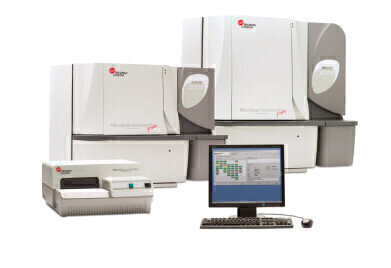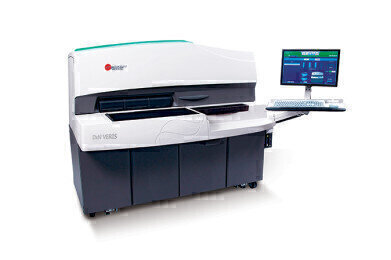Laboratory Products
Two New Automated Systems for Microbiology and Virology Launched
Dec 15 2016
Beckman Coulter has launched two automated systems in the UK to ease rapidly increasing workloads in microbiology and virology departments. The DxN VERIS Molecular Diagnostics system, for same-day molecular viral load testing, and the MicroScan Microbiology Systems for microorganism identification (ID) and antimicrobial susceptibility testing (AST), both rapidly and accurately identify therapeutic pathways for patient management. This high-throughput testing significantly streamlines laboratory workflows, and reduces time to patient therapy diagnoses. The launch marks the advent of a significant investment in the UK microbiology market by Beckman Coulter with further product introductions scheduled.
The UK launch of the systems was celebrated with a showcase event - the first in a new series of educational events designed to provide a platform for interested parties to learn about new technologies. At the initial event, attendees had the opportunity to; speak to individuals using the new automated platforms, evaluate data in the form of presentations, and speak with technical experts to answer queries and gain a greater depth of understanding.
Duncan Whittaker, Laboratory Manager Virology at the Sheffield Teaching Hospital NHS Trust, spoke at the event about his experience with the DxN VERIS - which provides fast and accurate viral load assays by consolidating extraction, amplification and detection onto a single platform. “The DxN VERIS is the kind of instrumentation that will help the laboratory to meet long terms goals for improved services with faster turnaround times and greater productivity,” he commented. The easy-to-use DxN VERIS system saves both hands-on time and space in the laboratory. Results are available rapidly - facilitating fast decision making and positively impacting patient treatment. Duncan confirmed, “Training staff is very quick and straightforward, taking just 20 minutes. Initial comments have been that faster results for certain viral load assays could be life-saving in some instances.”
Attendees also heard from Michael Dawson, Senior Biomedical Scientist, from the William Harvey Hospital where two MicroScan WalkAway 96 Plus systems are in use as part of the East Kent Microbiology Service. The systems have improved workflow and streamlined processes through the rapid delivery of ID and AST with gold-standard accuracy. The easy-to-use walkaway systems allow simultaneous processing of conventional, rapid, and specialty panels. In addition, the MicroScan offers true Minimum Inhibitory Concentration (MIC) technology with visual read capability, which enables the detection of emerging resistance in real-time, without reliance on historical data.
Michael spoke about his Trust’s decision to move to the MicroScan platform for AST in particular. “For us the need to move to an automated microbial screening system was clear. Our previous multipoint testing methods, supported by disc diffusion testing, were non-reproducible, unreliable and inaccurate. In addition to the lack of standardisation, they were time consuming and whilst we screened for many agents, MIC determination required a further manual method.”
He went on to describe his experience of the MicroScan platform. “Time and accuracy are important factors for us as we screen over 160 isolates a day, seven days a week. We’ve found that the accuracy and reliability of MicroScan means that fewer isolates need further testing, reducing unnecessary manual work and delivering results in a predictable and consistent timeframe. We are particularly impressed with the quick and very easy-to-use standardised PROMPT inoculation system and the fact that the MicroScan has the fewest clinically significant limitations in regard to antibiotic and micro-organism combinations.” He expanded, “This is great as fewer limitations mean we don’t have to revert to a manual method - which lengthens the process and delays the final results for the patient. Also, we’ve found the LabPro software to be very user friendly. There’s an excellent rules database which is flexible and allows us to tailor the final interpretation to our requirements. In particular, the Alert Rules and comments are helpful as they provide a failsafe mechanism when validating results and reporting. We are now looking forward to upgrading to the HighFlexX middleware solution which will allow us to integrate reporting from our MicroScan systems and MADLI-TOF, which is now used for ID requirements.”
Digital Edition
ILM 49.5 July
July 2024
Chromatography Articles - Understanding PFAS: Analysis and Implications Mass Spectrometry & Spectroscopy Articles - MS detection of Alzheimer’s blood-based biomarkers LIMS - Essent...
View all digital editions
Events
Jul 28 2024 San Diego, CA USA
Jul 30 2024 Jakarta, Indonesia
Jul 31 2024 Chengdu, China
ACS National Meeting - Fall 2024
Aug 18 2024 Denver, CO, USA
Aug 25 2024 Copenhagen, Denmark


-(1)-(1).jpg)


24_06.jpg)













